
table of contents
- Wood and rock bats
- Types from A - F
- Types of G - J
- Types of K - Q
- Types from R - Z
- House bats
- Types from A - F
- Types from G - Z
- frequently asked Questions
Unfortunately, bats still have a bad reputation, but they have a lot fascinating animals. Many species also live in the local area, some of which are presented in more detail in the following article.
In a nutshell
- Bats have been around for 50 million years
- only species of mammal that has ever learned to fly actively
- live in the dark, sleep in a dark place during the day and only fly at night
- Bats always sleep hanging upside down on the attic on the roof beams or in a cave on the rock
- find their way through ultrasonic calls
Wood and rock bats
These species include all bats that stay away from houses and prefer to live directly in the wild, in the forest or in the mountains. Here they prefer to sleep in caves, in dense trees or in crevices. In the evenings they hunt for their favorite insects in the forest or in the meadows.
Types from A - F
Alpine bat (Hypsugo savii, Syn.: Pipistrellus savii)
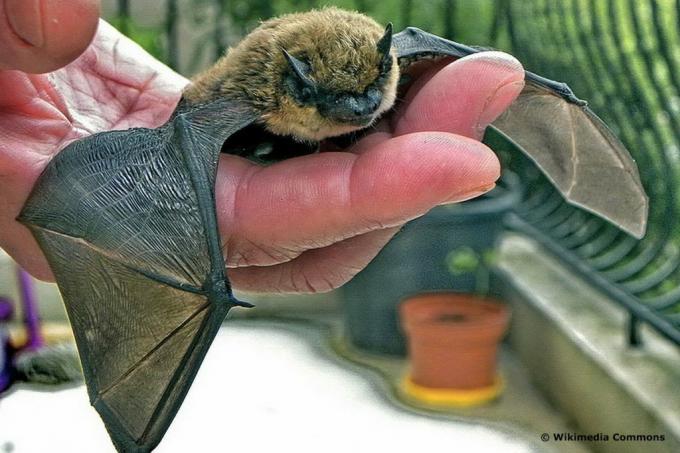
Ce message in français, Vespere de Savi, edited by Plantopedia, CC0 1.0
- prefers to live in the mountains
- only in southern regions of the country
- lives in habitats rich in rocks
- between the Alps and the Mediterranean coast
- more and more sighted in urban areas
- "Colorful dog" among bats
- shimmering brown gold
- long haired
- wide, short, rounded ears
- holds wings half closed while gliding
Note: The highest altitude at which the Alpine bat was sighted is 3,300 meters. Therefore, the Alpine bat is also considered a mountaineer among all bat species.
Bechstein's bat (Myotis bechsteinii)

- lives in 50 different quarters in one year
- big ears
- long-haired fur
- therefore quite slow flight
- broad, short fore wings
- help with agile flight maneuvers
- even between leaves of trees and bushes
- only use short ultrasonic calls
- the big ears perceive the smallest echo
Note: The Bechstein's bat not only hunts for insects in the air, but can also collect insects sitting on the ground or leaves during its flight.
Types of G - J
Great noctule (Nyctalus noctula)
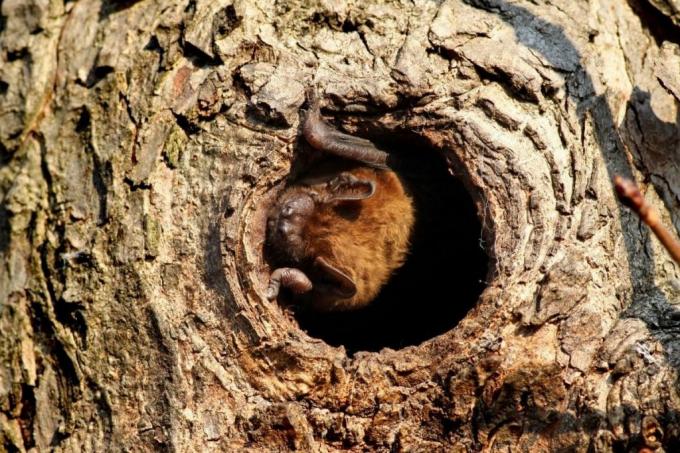
- up to 60 km / h very fast hunting speed
- at dawn and dusk
- narrow, long, pointed wings for fast flight
- Span between 32 and 40 centimeters
- very persistent, 10 km flight range common
- very large bat species
- cannot maneuver well
- Close-fitting, smooth, greasy, rust-brown fur
- migratory species
- fly up to 1,600 km to winter quarters
Great bearded bat (Myotis brandti)
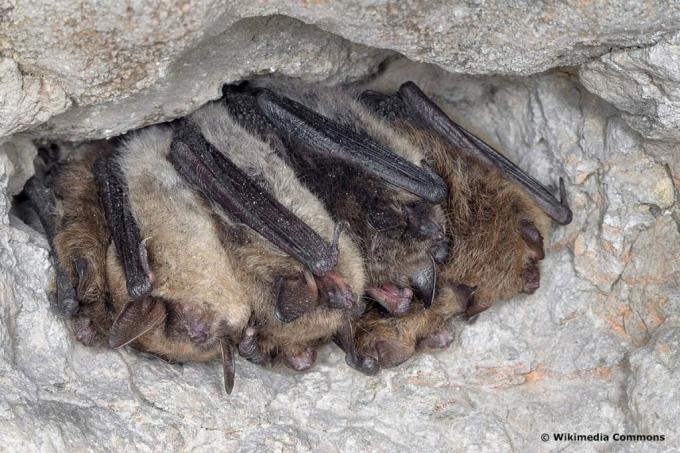
- prefers humid areas
- Bogs, damp forests and bodies of water
- small bat species
- very long fur
- dark brown-gray base
- shiny gold on the tips of the back fur
Note: Bats can “see” with their ears by emitting various noises, the frequencies of which are mostly inaudible or only barely audible to us humans. After the sound that follows, they let themselves be guided.
Great horseshoe bat (Rhinolophus ferrumequinum)
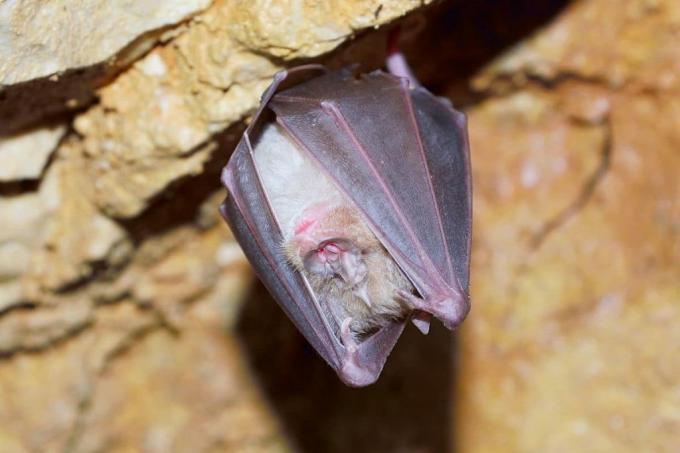
- Calls are made through the nose
- not like other bats over the snout
- Nose is horseshoe-shaped
- noticeable flap of skin on the nose
- in the summer in the attics of towers or caves
- in winter in vaults and caves
- Males mate with all of the females in the family
- but are loyal here
- the species can be very old up to 30 years
Types of K - Q
Little Noctule (Nyctalus leisleri)
- little sister species of the great noctule
- annual long walks
- hardly smaller than the large species
- Wingspan 26 to 32 centimeters
- short, two-tone, close-fitting hair
- Base black-brown, tips rust-brown
- often hunt along linearly cultivated trees
- for example avenues or rows of trees
- also on illuminated streets
Lesser whiskered bat (Myotis mystacinus)
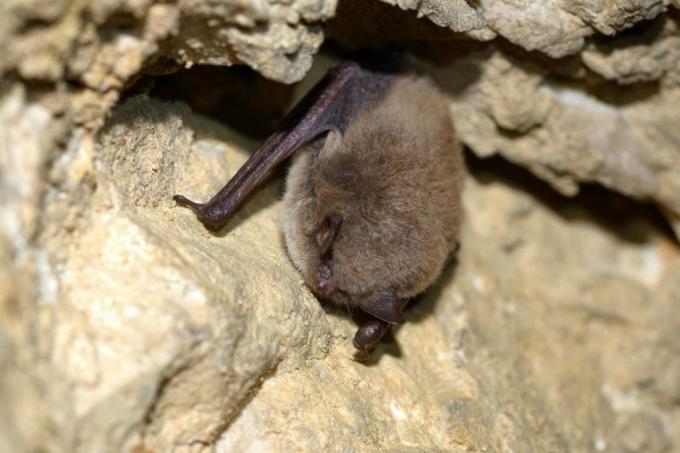
- Confusion with pygmy bat and nymph bat
- also with the great whiskered bat
- only a little smaller than the "big" sister
- very rare bat species
- black-brown flight and facial skins
- long, frizzy fur
- dark gray brown on top
- hunts in meadows and forests
- sleeps in structures
- in the formwork
- even behind little-used shutters
Northern bat (Eptesicus nilssonii)

- also occurs north of the Arctic Circle
- widespread in Europe
- as cold climates are preferred
- preferred hunting area at the edge of the forest
- also on ponds
- under lanterns
- snatches their prey out of the air
- in the summer in columns of buildings
- in winter in caves or crevices
- can live up to 20 years
Nymph bat (Myotis alcathoe)
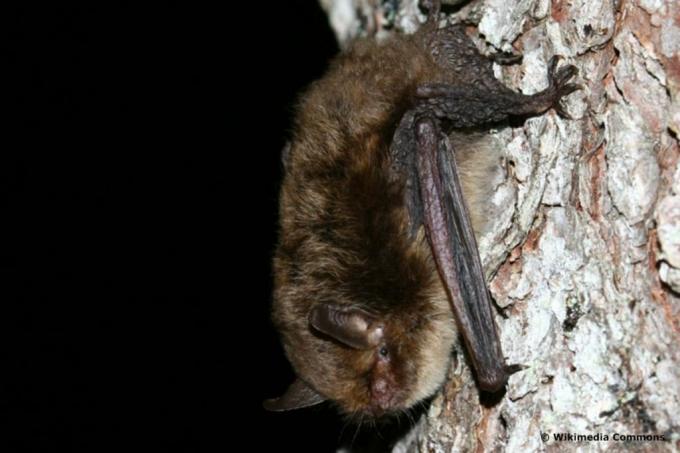
- was recognized as a separate species in 2001
- resembles the lesser whiskered bat
- however, has a different genetics
- They also differentiate between teeth and reputation
- first seen in Germany in 2005
- Name from Greek mythology
- a nymph was turned into a bat as a punishment
Types from R - Z
Rough-skin bat (Pipistrellus nathusii)

- sleeps in attics hunts in woods
- needs a lot of trees to hunt
- Accommodation preferably near water
- hunt in the bank area
- Nursery colonies can be found in narrow crevices
- in the summer also in tree hollows
- very small kind
- not much bigger than mosquito or pipebats
- Up to 1,900 km are covered to the winter quarters
Tip: Hang bat boxes in your yard. These are gladly accepted by the little rough-skin bat, even if it is more likely to be classified as a forest bat.
Pond bat (Myotis dasycneme)

- large wingspan
- between 20 and 30 centimeters
- prefer water-rich areas in northern Germany
- on rivers or large lakes
- need large expanses of water for hunting
- straight, fast flight
- prefer caddis flies and midges
House bats
The house bats include all those species that like to be close to people and prefer to spend the night here in attics. These bats then hunt mainly in the gardens and parks on the outskirts of large cities and in small villages.
Types from A - F
Brown long-eared (Plecotus auritus)
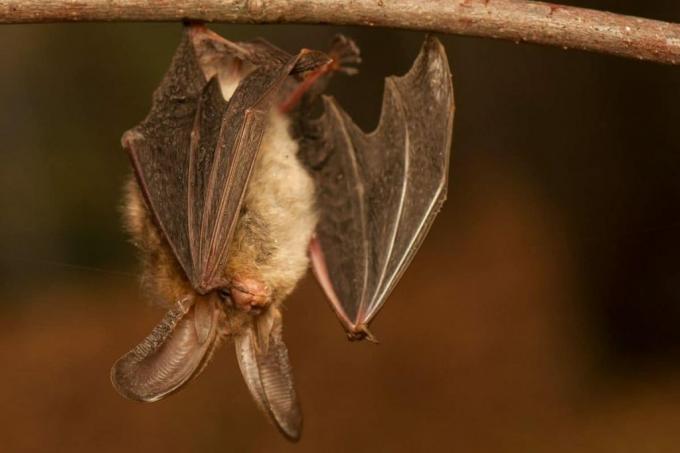
- Ultrasonic calls are made through the nose and mouth
- Insects are collected from leaves
- have bell tubes
- can also perceive quiet echoes
- Forest and garden hunting area
- also barns or near houses
- prefer curlers, moths and tensioners
- Nursery colonies increased in attics
- crawl into crevices in the roof
- Hibernation prefers in damp and cool cellars
Tip: When it's very quiet at night, you can hear the whispering ultrasonic calls of the Long-eared bats can even hear them, these are over 50 kilohertz and thus above that of humans Hearing ability.
Broad-winged bat (Eptesicus serotinus)
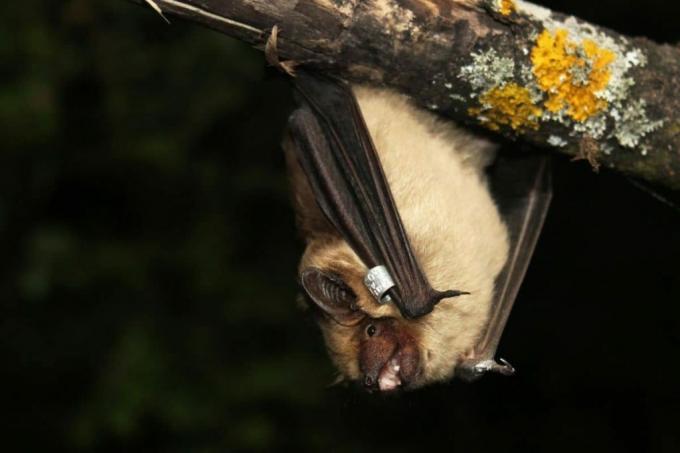
- likes to live hidden in expansion joints or crevices
- between insulation and roof tiles
- typical "house bat"
- comes from quarters right after sunset
- flies slowly and slowly
- Speed between 20 and 30 km / h
- Hunting room in the adjoining garden
- preferably also under street lamps
Note: Did you know that bats have been around for an estimated 50 million years. Mammals are the only ones that have learned to fly on their own.
Fringed bat (Myotis nattereri)
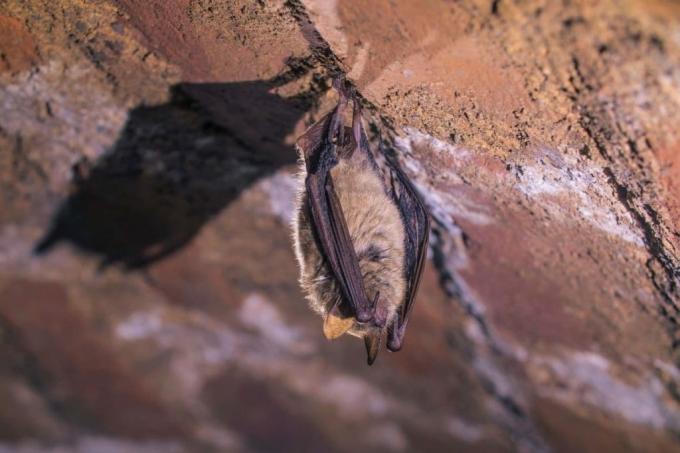
- both wood and house bat
- prefers attics for raising the offspring
- here in cavities
- between inside and outside walls
- can also be found in cow stalls
- are often not left to search for food
- bristle hairs on the tail skin
Types from G - Z
Gray long-eared (Plecotus austriacus)
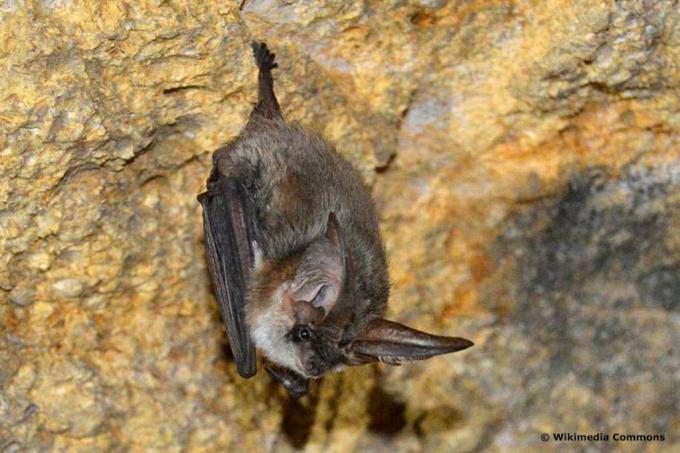
- Ears look like the horn of the ram
- can be confused with brown long-eared
- grey fur
- long snout
- prefers building columns
- in winter in vaults and caves
- Calls can hardly be heard
- sounds like "vrrrrrt"
Great mouse-eared mouse (Myotis myotis)
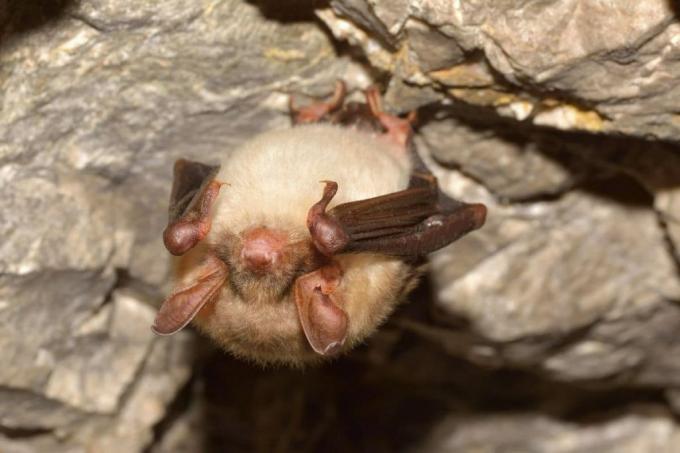
- has very good ears
- perceives rustling in the leaves on the ground
- prefers attics
- especially in castles or churches
- hangs upside down and free here
- Maternity room for more than 2,000 animals
- Hanging time here is seasonal in summer
- only females with offspring
- come back over many generations
frequently asked Questions
In Germany the long-winged bat (Miniopterus Schreibersii) is considered to be extinct. While it was still reproducing on the Kaiserstuhl in the 1960s, there has been no evidence that it still lives in Germany since the 1990s. However, it is still widespread in the Mediterranean region.
"Bat of the year 2020/21" is the pug bat (Barbastella barbastellus), which owes its name to its squat nose, which is similar to the pug. The pug bat is one of the forest bats, but also likes to move into a cellar in winter.
The mosquito bat (Pipistrellus pygmaeus, Syn.: Pipistrellus mediterraneus), which was discovered only a few years ago, is the smallest bat species in the local area. Previously only the pipistrelle bat (Pipistrellus pipistrellus) was known. However, it is still largely unexplored how the way of life of the two smallest species differs.
There are currently more than 1,200 bat species living on earth. Most of them, however, prefer the warmth and therefore live in tropical climates. However, the further north you go, the lower the biodiversity becomes. In Germany there are currently 25 known bat species that inhabit the gardens and forests here.
